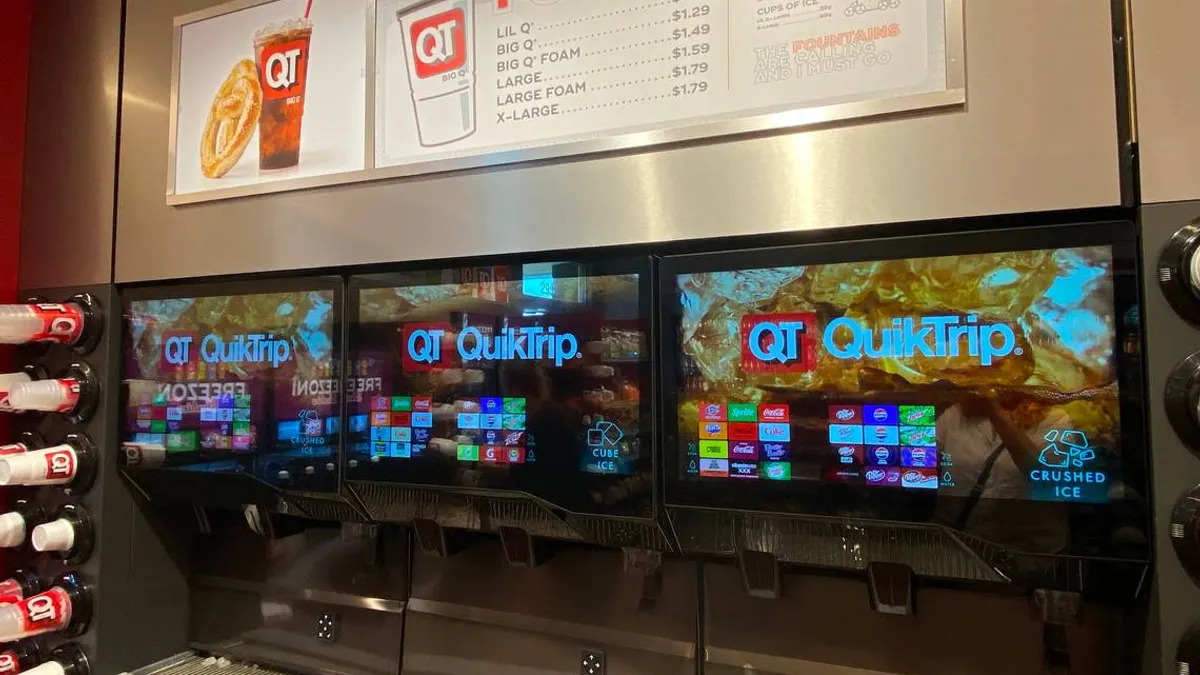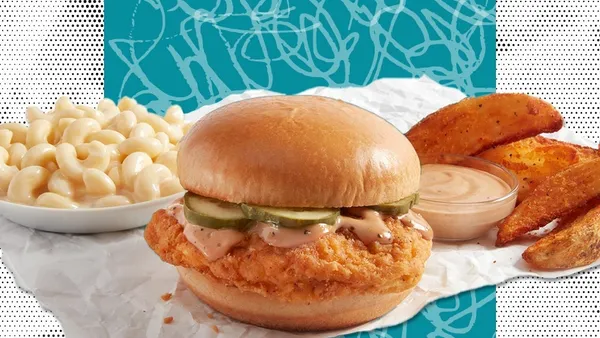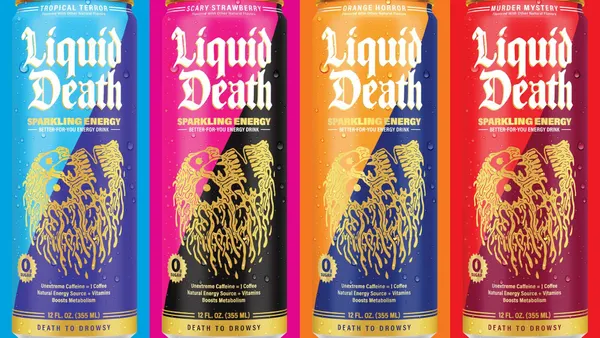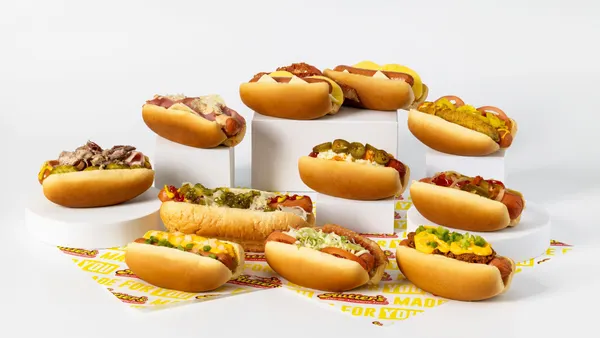Dive Brief:
- DoorDash’s convenience and grocery businesses, combined, grew 80% year-over-year in marketplace gross order value (GOV), the company reported in its earnings for the third quarter, which ended Sept. 30. The company said the number of its U.S. consumers who have ordered from a grocery store has more than doubled in the past year.
- The company’s third-party grocery service has “improved margins” and doubled with over 100% year-over-year growth in marketplace GOV, while its convenience business is on track to become profitable next quarter, the company noted.
- DoorDash’s significant growth in food delivery for grocery and convenience indicates the company’s increasing edge in the competitive third-party delivery landscape.
Dive Insight:
Expanding DoorDash’s business beyond restaurants is boosting consumer engagement, highlighted by the “growing number and percentage of consumers whose first order is from a non-restaurant category,” Tony Xu, co-founder, CEO and board chair, and Chief Financial Officer Prabir Adarkar said in a letter to shareholders.
DoorDash improved variable profit — revenue minus order management and support costs — for its third-party convenience marketplace in the U.S. during Q3 and expects to achieve positive variable profit this year, Xu and Adarkar said.
“This is a business where we rapidly emerged as a category leader and remain so today, according to third-party data,” they said in the letter.
DoorDash’s foray into grocery and conveinence delivery has pitted it against the likes of Instacart and Gopuff for consumers’ spend. Yet the battle for snagging partnerships with grocery and convenience companies has gotten increasingly complicated by retailers building up their own e-commerce platforms and, in some cases, migrating their consumers from third-party marketplaces over to their in-house services.
As the company grows its grocery and convenience presence, Xu and Adarkar noted there is still “substantial room” to make improvements in its non-restaurant categories, including boosting “selection, quality, affordability, and service.”
In September, EG Group announced it would add DoorDash delivery from 1,300 stores. DoorDash also offers delivery from c-store chains like 7-Eleven, Circle K and Casey’s.
DoorDash has also been growing its list of grocery tie-ups, with recent partnerships including Loblaw in Canada, Sprouts Farmers Market, Grocery Outlet, Giant Eagle and The Raley's Companies.
The tie-up with Loblaw marked DoorDash’s first time using dark stores to power rapid delivery for a retail partner.
In February, DoorDash announced the launch of an “express” grocery service that delivers orders in less than 30 minutes. That service is being used by Albertsons, with workers handling in-store order picking and packing.
Previously, DoorDash has also unveiled its own convenience delivery service and 15-minute delivery. The company’s innovations in delivery fulfillment and speed come at a time when Instacart and Uber Eats are also launching a slew of new e-commerce features to cater to different needs from retailers and consumers.
“Retail and grocery partnerships will be a growth driver for DashPass, which will also create an opportunity for higher average order value,” Nicholas Cauley, analyst at Third Bridge, said in emailed comments following the company’s earnings. “Our experts say that while DoorDash has one of the best restaurant selections, it is lagging behind competitors in non-restaurant verticals.”












